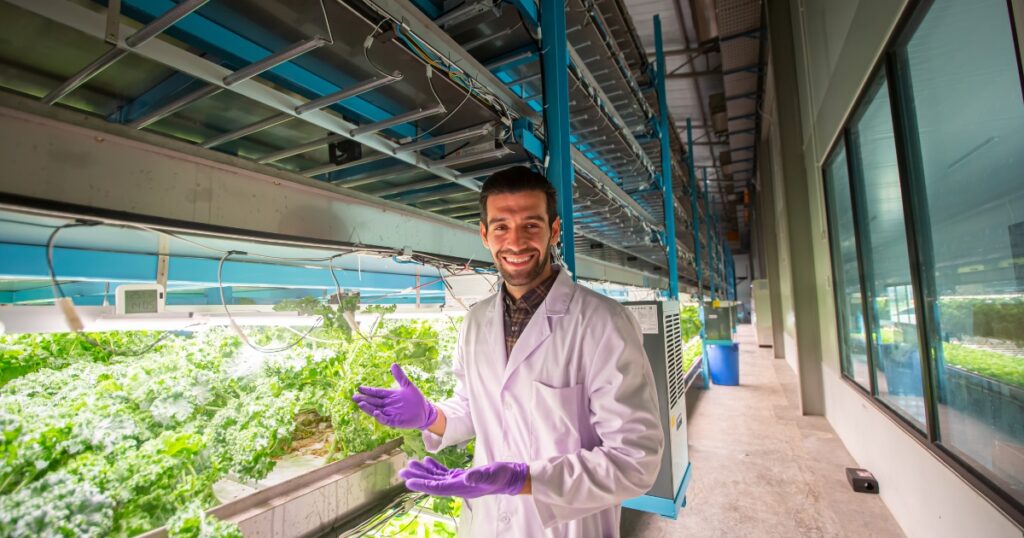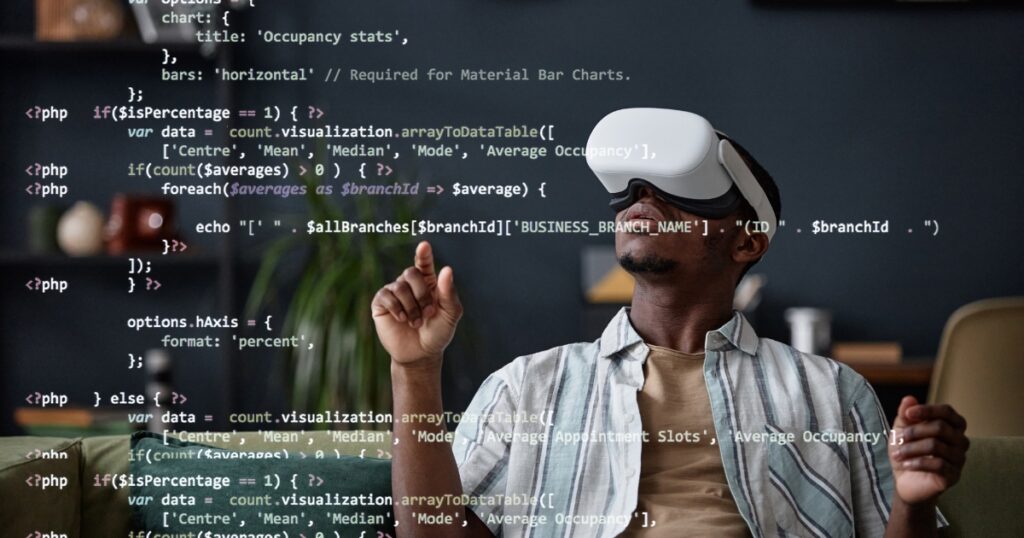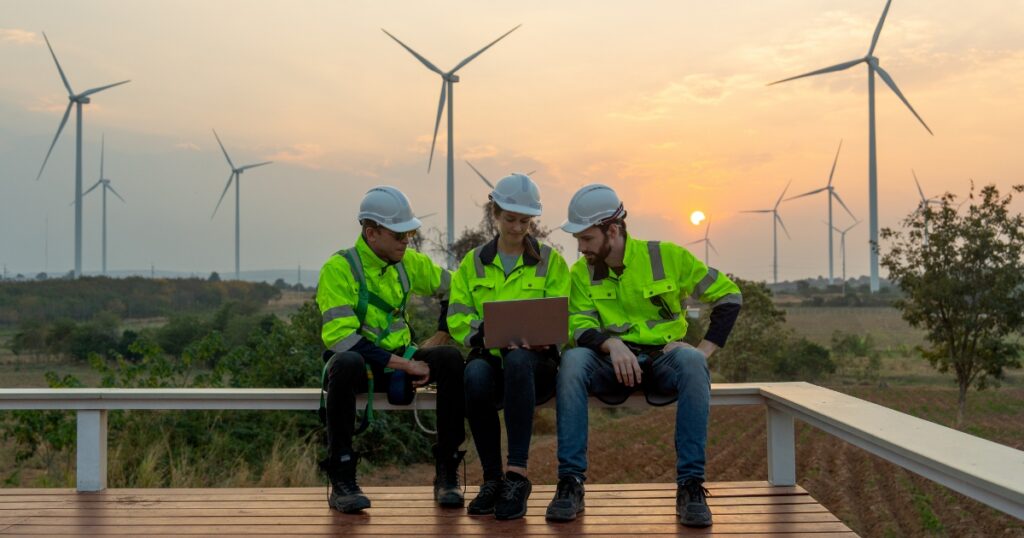Why Crazy Business Ideas Shape the Future
In every era, the most successful businesses were once labelled crazy.
When Jeff Bezos quit his high-paying Wall Street job in 1994 to sell books online, most analysts predicted failure.
In the early 2000s, few investors believed that people would sleep in strangers’ homes through a platform called Airbnb, or pay to watch short videos on YouTube.
These ideas sounded unreasonable — even foolish — until they transformed entire industries.
What we call crazy today often reflects our discomfort with change.
But history shows that those who dared to think differently built the businesses that defined their generation.
The 2020s and 2030s will be no different — only faster.
Technology is advancing at a pace that compresses decades of innovation into just a few years.
Artificial intelligence, robotics, biotech, and space tech are not just tools anymore; they are the foundation stones for entirely new economies.
Consider this:
- According to PwC, AI could contribute $15.7 trillion to the global economy by 2030.
- By 2050, the UN projects that 68% of the world’s population will live in cities, creating unprecedented demand for food, healthcare, and infrastructure.
- Climate change and water scarcity will push humanity toward radical solutions that once seemed like science fiction.
These shifts create fertile ground for unconventional ideas.
In fact, the very definition of what we call “business” is expanding — from selling products and services to selling experiences, data, and even virtual assets.
The Entrepreneur’s New Frontier
Imagine being an entrepreneur in 2035.
You’re no longer limited by geography, capital, or even the laws of physics as we know them.
You could be selling digital clothing to avatars in the metaverse, leasing vertical farms to urban families, or running subscription-based space tours.
The barriers to entry for new industries are falling:
- Low-code and AI-driven tools allow small teams to launch solutions once reserved for billion-dollar companies.
- Global marketplaces mean your first customer could be from another continent.
- Crowdfunding and crypto-based finance reduce dependence on traditional investors.
The world is literally opening its doors to “crazy” thinkers.
Yet, these opportunities come with challenges — ethical dilemmas, trust issues, regulation, and fierce competition.
The entrepreneurs who succeed will be those who combine bold imagination with practical execution.
This article explores 10 crazy business ideas that might feel outlandish today but could shape the next two decades of global commerce.
For each idea, we’ll share its origin, the trends making it possible, and how a bold entrepreneur could seize the opportunity.
AI-Driven Personal Health Companions – The Doctor in Your Pocket

Imagine waking up in 2035.
Before you even get out of bed, your AI health companion greets you:
“Good morning. I’ve analysed your sleep pattern, heart rate, and oxygen levels.
Your blood pressure looks a bit high today. Let’s adjust your breakfast plan and schedule a light 20-minute walk before lunch.”
What sounds like a scene from a sci-fi film is quickly becoming reality.
The convergence of wearable technology, advanced AI, and personalised medicine is creating a new class of business: AI-driven personal health companions.
From Fitness Trackers to Full-Scale Health Partners
Back in the early 2010s, we marvelled at simple step counters like Fitbit.
By the 2020s, smartwatches like Apple Watch and Oura rings began detecting heart irregularities, sleep cycles, and even early signs of illness.
Now, startups are moving far beyond counting steps:
- AI algorithms can already detect conditions such as atrial fibrillation or sleep apnea earlier than most doctors.
- Continuous glucose monitoring sensors, combined with predictive AI, can warn diabetics hours before a dangerous spike.
- Companies like WHOOP and Levels show how subscription-based health data analysis can change lifestyle habits in real time.
The next wave is a 24/7 AI health companion:
- Integrated with your wearables, home sensors, and even genetic data.
- Acting as your first-line health advisor, coach, and preventive-care assistant.
- Offering daily guidance, flagging risks early, and connecting you with doctors when necessary.
A Growing Market with Real Data
The personal health tech market is already enormous — and it’s only getting started:
- According to Grand View Research, the global wearable medical device market was valued at $32 billion in 2023 and is expected to grow at over 25% annually through 2030.
- AI in healthcare is projected by Statista to surpass $187 billion by 2030.
- Preventive healthcare — powered by personalised AI guidance — is becoming a trillion-dollar global opportunity.
These numbers tell us one thing:
The future of healthcare isn’t limited to hospitals and clinics. It will live in our homes, on our wrists, and in the cloud.
Why This “Crazy” Idea is Inevitable
Three megatrends are driving the rise of AI-driven health companions:
- Ageing Populations:
By 2050, over 2.1 billion people will be over the age of 60, creating demand for preventive, at-home monitoring. - Healthcare Costs:
Rising medical costs push individuals and governments to adopt tech-driven, low-cost prevention rather than expensive hospital visits. - Data-Driven Lifestyles:
Younger generations are used to quantifying everything — from steps to sleep. Health is the next big data frontier.
Combine these with the public’s growing trust in AI — particularly when it proves to save lives — and the path becomes clear.
What once felt like a far-fetched “robot doctor” dream is transforming into an everyday subscription service.
Opportunities for Entrepreneurs
The most exciting part?
This isn’t a future reserved only for giant healthcare corporations.
Here’s how bold entrepreneurs can enter the field:
- Specialised AI Coaching: Apps for niche conditions (e.g., women’s hormonal health, mental-health monitoring, or senior-care support).
- Integrated Ecosystems: Platforms that connect wearable data with nutritionists, therapists, and medical professionals.
- Hardware-Software Partnerships: Building or licensing affordable, user-friendly devices connected to proprietary AI health apps.
- Data Privacy Startups: Services that ensure secure, ethical storage of sensitive health information — a major consumer concern.
Early movers in this market can gain both financial success and profound social impact.
A Glimpse into the Future
In just a decade, we might no longer book routine doctor visits for mild conditions.
Instead, we’ll interact daily with our personalised AI companion, which will:
- Spot a brewing infection before it becomes severe.
- Adjust our diet based on blood biomarkers.
- Remind us to take a break, breathe, and even call a human therapist when needed.
And when we finally do visit a doctor, the AI companion will bring along years of structured health data, giving medical professionals unprecedented insight.
The line between healthcare and daily life will blur — and that is exactly where the opportunity lies for forward-thinking founders.
Sustainable Vertical Farming – Feeding Cities of the Future

Picture this:
It’s the year 2035.
You live on the 22nd floor of a bustling megacity apartment building.
Next door, in what used to be an empty warehouse, rows of lush green vegetables grow under soft LED lights.
A fully automated system monitors temperature, humidity, and nutrient levels, while drones move between the aisles to harvest and deliver fresh produce to your door — all within hours.
This isn’t a sci-fi fantasy.
It’s the future of food production — and it’s already taking shape today through sustainable vertical farming.
The Challenge of Feeding Billions
Humanity is facing a hard truth:
By 2050, the global population is projected to reach 9.7 billion, and nearly 70% will live in cities.
Traditional agriculture — sprawling fields, heavy machinery, and long-distance transport — simply can’t keep up with that demand.
Consider these challenges:
- Land Scarcity: Farmland is shrinking as cities expand.
- Climate Change: Extreme weather events are disrupting growing seasons.
- Water Shortages: Agriculture currently consumes about 70% of the world’s freshwater.
- Food Security: Import dependence makes many urban regions vulnerable to price shocks and supply chain breakdowns.
All these pressures are opening the door for a “crazy” but highly practical idea: farming upwards instead of outwards.
How Vertical Farming Works
Vertical farming flips the traditional concept of agriculture on its head — literally.
Instead of spreading crops across fields, plants are grown in stacked layers inside controlled indoor environments.
Advanced systems replace soil with hydroponics, aeroponics, or aquaponics.
LED lighting mimics sunlight, while AI-driven software optimises nutrient delivery and tracks plant health in real time.
This approach:
- Uses up to 90% less water than traditional farming.
- Reduces land use drastically — perfect for dense cities.
- Cuts food transportation costs and emissions by growing food closer to consumers.
- Provides consistent yields year-round, unaffected by seasons or storms.
Companies like AeroFarms, Plenty, and Infarm are proving that vertical farms can be both profitable and scalable.
The Business Opportunity
Vertical farming is no longer just a science experiment.
It’s becoming a hotbed for innovation and investment.
- The global vertical farming market was valued at $5.6 billion in 2022 and is projected to reach over $33 billion by 2032 (Allied Market Research).
- Urban consumers are increasingly willing to pay for locally sourced, pesticide-free produce.
- Governments in regions like the Middle East and Asia are funding indoor agriculture to boost food security.
Entrepreneurs entering this space can explore:
- Tech-Driven Farms: Launching farms equipped with robotics and AI-powered crop management.
- Software Solutions: Building platforms that help existing farmers transition to vertical systems.
- Logistics and Retail Integration: Creating direct farm-to-consumer delivery models.
- Specialty Crops: Supplying rare herbs, medicinal plants, or premium produce to restaurants and healthcare industries.
A Story from the Field
In Singapore, a land-scarce island nation, companies like Sky Greens pioneered vertical farming to meet local food demand.
With a population of nearly six million and limited farmland, Singapore’s strategy was once heavily reliant on imports.
Today, government-backed vertical farms supply fresh leafy greens to local supermarkets — reducing import dependency and ensuring freshness.
This success story has inspired other urban hubs — from New York to Dubai — to invest in similar infrastructure.
Sustainability Meets Profitability
What makes vertical farming so powerful is its ability to balance planetary needs with business growth:
- Reduced environmental footprint.
- Local production with fewer food miles.
- Reliable yields despite external climate shocks.
- New job creation in high-tech agriculture.
In the coming decade, as cities grow and climate stress increases, vertical farming will move from niche to necessity.
Entrepreneurs who join this movement early can shape the future of how we grow and consume food.
Space Tourism and Off-Earth Ventures – The Next Billion-Dollar Frontier

In July 2021, millions of people around the world watched as Richard Branson (Virgin Galactic) and Jeff Bezos (Blue Origin) took sub-orbital flights.
For the first time, space travel wasn’t just for astronauts and scientists — it was for tourists.
To many, it looked like an eccentric billionaire’s hobby.
But in hindsight, that moment may be remembered as the beginning of the commercial space age.
Fast forward to the 2030s and beyond:
What seems like a far-off dream today — weekend trips to orbit, lunar hotels, asteroid mining — is steadily turning into a viable business sector.
The Human Desire to Explore
Throughout history, exploration has driven progress.
Five centuries ago, the “crazy” idea was to sail across oceans.
In the 20th century, it was to cross the skies.
In the 21st century, it’s venturing beyond Earth.
The motivation is not just curiosity:
- Tourism: Offering wealthy travellers once-in-a-lifetime experiences.
- Research and Innovation: Enabling experiments in zero-gravity environments.
- Resource Mining: Accessing rare minerals on asteroids and the Moon.
- Climate Response: Exploring possibilities for off-planet production to reduce Earth’s ecological burden.
The Numbers Behind the Dream
The space economy is no longer science fiction.
According to Morgan Stanley, the global space industry — currently valued at around $630 billion in 2024 — is projected to surpass $1 trillion by 2040.
Tourism alone could become a significant slice of that:
- Sub-orbital flights already cost $250,000–$450,000 per seat.
- SpaceX, with its Crew Dragon capsule, is preparing to offer multi-day orbital journeys.
- Startups are exploring space hotels, complete with artificial gravity and panoramic views of Earth.
Opportunities for Entrepreneurs
Although today’s ticket prices seem astronomical, innovation tends to make technologies more affordable.
Air travel itself was once a luxury reserved for the elite.
Here’s where early-stage entrepreneurs can play a role:
- Space Hospitality: Designing zero-gravity entertainment, tourism packages, or immersive VR experiences for passengers.
- Infrastructure Support: Developing eco-friendly launch facilities, orbital refuelling stations, or off-planet supply chains.
- Health and Safety Solutions: Creating specialised suits, emergency equipment, and space-adapted medical care.
- Training and Education: Building astronaut-like preparation programs for non-scientific travellers.
A Story from the Launchpad
In 2023, Japanese billionaire Yusaku Maezawa became the first private citizen to book a flight around the Moon with SpaceX’s Starship.
This trip, planned as part of the “dearMoon” project, will include artists, photographers, and musicians — showcasing that space travel isn’t limited to engineers or scientists.
Such initiatives spark both curiosity and commercial opportunity.
The moment creative professionals start venturing into orbit, new markets emerge — from fashion for spacewear to live-streamed cosmic concerts.
Challenges to Overcome
Of course, venturing beyond Earth isn’t without obstacles:
- The cost of launch remains high despite reusable rockets.
- Radiation exposure and long-term health effects are still a concern.
- Regulations and treaties governing off-planet activity are in early stages.
- Building trust among potential travellers will require years of flawless safety records.
These challenges, however, are typical for all pioneering industries.
As technology matures, costs decline and new ecosystems form — much like commercial aviation evolved in the 20th century.
Looking Ahead
By 2045, a space vacation might cost no more than an exotic cruise today.
Off-planet research hubs could accelerate medical and materials science breakthroughs.
Mining operations on near-Earth asteroids could bring rare resources back to Earth’s industries.
For today’s bold thinkers, the question is no longer “if” space tourism will grow — it’s “how soon can we participate?”.
The next two decades may mark humanity’s biggest entrepreneurial leap since the invention of the internet.
Smart Materials and Bio-Fabrics – Building the Future of Everything

In the mid-19th century, the invention of steel transformed cities — suddenly, skyscrapers and railroads became possible.
In the 20th century, plastics and synthetic fibres reshaped industries from fashion to aerospace.
Now, in the 21st century, we stand on the edge of another material revolution: smart materials and bio-fabrics.
These are not just new substances; they’re materials that can think, adapt, and respond to the environment.
And like all great “crazy” ideas, they promise to upend industries we take for granted.
The Spark Behind Smart Materials
Imagine a jacket that adjusts its insulation based on outdoor temperature.
Or a hospital bed sheet that detects early signs of infection.
Or construction panels that repair small cracks on their own.
These innovations are made possible by breakthroughs such as:
- Self-healing polymers: Plastics that reseal when damaged.
- Shape-memory alloys: Metals that change shape in response to heat or electricity.
- Conductive fabrics: Textiles that double as sensors and power sources.
- Bio-fabrics: Materials grown from living organisms — like mushroom-based leather or spider-silk fibres produced by engineered yeast.
A Market in Rapid Growth
Once the domain of research labs, smart materials are now a booming business.
According to MarketsandMarkets:
- The global smart materials market is projected to grow from $72 billion in 2024 to over $130 billion by 2030.
- Bio-based materials, such as lab-grown leather and plant-derived textiles, are among the fastest-growing segments, driven by sustainability demands.
Fashion, construction, automotive, and healthcare industries are leading adopters:
- In fashion, brands like Bolt Threads and MycoWorks are already supplying mushroom-based leather for high-end bags and shoes.
- In construction, self-healing concrete is being tested to extend building lifespans and reduce maintenance costs.
- In healthcare, bio-responsive implants and wound dressings promise faster recovery and fewer complications.
A Glimpse from the Runway
In 2022, luxury brand Stella McCartney unveiled a handbag made entirely of mycelium — the root network of mushrooms.
Once a curiosity, this product demonstrated that bio-fabrics can match the feel, durability, and style of traditional leather, without the environmental toll of livestock farming.
Such real-world showcases signal to both consumers and investors that bio-fabrics are ready for mainstream adoption.
Entrepreneurial Opportunities
This shift opens up a playground for innovators:
- New Materials Startups: Developing affordable, scalable alternatives to animal- or petroleum-based fabrics.
- Supply Chain Platforms: Connecting bio-fabric producers with fashion, furniture, and automotive brands.
- Smart Clothing Lines: Launching apparel that monitors health metrics or adapts to climate conditions.
- Construction Solutions: Providing eco-friendly building materials for urban developers.
For early-stage founders, partnerships with research institutions and access to venture capital focused on sustainability will be key to entering this sector.
Why It Matters
Climate change, resource scarcity, and growing consumer demand for sustainable products are all converging to create a perfect storm for this industry:
- The fashion sector alone contributes nearly 10% of global carbon emissions.
- Conventional construction materials are among the biggest polluters and waste producers.
- Healthcare costs rise due to infection and injury complications that smarter materials could help prevent.
Replacing resource-intensive legacy materials with adaptive, eco-friendly alternatives isn’t just good for the planet — it’s a multi-billion-dollar opportunity.
The Future Vision
By the 2040s, it’s not far-fetched to imagine:
- Homes built with panels that regulate their own temperature and heal small cracks automatically.
- Clothing that senses dehydration, posture issues, or stress and nudges you to act.
- Bio-engineered fabrics that biodegrade fully at the end of their lifecycle, creating a true circular economy.
Just as steel defined the skylines of the 20th century, smart materials and bio-fabrics will define the products, buildings, and lifestyles of the 21st.
The Metaverse Economy – Owning, Trading, and Working in Virtual Worlds

On a chilly December evening in 2021, a 28-year-old Toronto investor made headlines when he spent $2.4 million on a virtual plot of land in Decentraland.
Many people scoffed. “Who pays real money for fake land?” they asked.
Fast-forward to today, that same plot is surrounded by virtual shops, ad billboards, and event spaces. It’s worth several times more than its purchase price — and it earns rental income from brands running pop-up stores in the metaverse.
This is just one story in the rise of the metaverse economy — a digital universe that’s becoming a parallel arena for commerce, social life, and work.
What the Metaverse Really Is
Forget the sci-fi hype for a moment.
The metaverse is not a single place owned by one company. It’s a network of persistent, immersive, shared virtual spaces where people can:
- Socialise, work, and attend events.
- Create and trade virtual goods.
- Build businesses that have real-world income.
It combines virtual reality (VR), augmented reality (AR), blockchain, and digital identity systems to create experiences that feel real enough to live in — yet are unbounded by geography.
The Metaverse Market by Numbers
The market’s trajectory is staggering:
- In 2021, global metaverse-related spending was around $38 billion.
- By 2025, analysts at Citi project the metaverse economy could reach $800 billion.
- Long-term forecasts suggest it could surpass $5 trillion by 2030, driven by gaming, virtual commerce, education, and remote work.
Investments have poured in from tech giants and venture funds:
- Meta (Facebook) alone has spent over $50 billion building metaverse infrastructure.
- Brands like Nike, Gucci, and Coca-Cola have opened virtual stores and launched collectible digital goods.
- Universities and corporations are experimenting with virtual campuses and training environments.
How Commerce Works in the Metaverse
The metaverse runs on digital ownership.
That’s where blockchain and NFTs (non-fungible tokens) come in.
Imagine:
- Buying a piece of virtual beachfront property in a metaverse platform like The Sandbox.
- Decorating it with digital art that you own as NFTs.
- Hosting ticketed concerts in your space.
- Earning rent or selling advertising placements to other brands.
It’s a digital reflection of the real-world economy — only faster, borderless, and often more speculative.
Jobs and Work in Virtual Worlds
The metaverse is also creating an entirely new labour market.
A 22-year-old graphic designer in Dhaka can now become:
- A virtual fashion designer, creating skins and outfits for avatars.
- A real estate agent, helping investors buy and sell digital plots.
- A builder who codes interactive experiences for brands.
- A virtual event host for product launches and concerts.
In South Korea, several government agencies now hold official meetings in VR environments.
In the U.S., companies like Accenture train thousands of new employees in virtual campuses.
A Human Story – From Gamer to Entrepreneur
Take the story of Sasha, a gamer from Poland.
In 2020, she started designing avatar accessories in Roblox as a hobby.
By 2023, she was earning $80,000 a year from her creations — enough to leave her day job and hire a small remote team.
Sasha’s story is a microcosm of how the metaverse democratises entrepreneurship: anyone with creativity, an internet connection, and some basic 3D skills can build and sell products in virtual spaces.
Challenges and Pitfalls
Despite the opportunities, the metaverse isn’t a guaranteed gold rush:
- Volatile NFT markets can wipe out fortunes overnight.
- Regulatory frameworks for digital property and taxation are still evolving.
- High-quality hardware like VR headsets remains expensive in many regions.
- There’s the ongoing debate about privacy, data security, and mental well-being in always-connected virtual worlds.
These challenges mean that the early years of the metaverse economy resemble the dot-com era — full of wild speculation, rapid innovation, and inevitable shake-outs.
Why It Matters
The rise of the metaverse signals a cultural shift as much as an economic one:
- Younger generations (Gen Z and Gen Alpha) are already spending more time and money on virtual experiences than on physical goods.
- Businesses that learn to sell, market, and deliver services inside immersive spaces will have a competitive edge.
- Remote work, education, and even healthcare could become more engaging and effective with metaverse-based platforms.
The Road Ahead
By 2035, it’s plausible that:
- Your digital wardrobe will matter as much as your real one.
- People will commute less and collaborate more in virtual offices.
- Real estate agents will pitch both physical and virtual properties.
- Live entertainment — from theatre to music festivals — will happen as much in virtual venues as in stadiums.
Just as social media transformed marketing and e-commerce in the 2010s, the metaverse will likely redefine where and how we work, shop, and connect in the decades to come.
Fusion of Robotics and AI – The Next Wave of Automation

In 2019, a small car-parts factory in Nagoya, Japan, was struggling with rising labour costs and an ageing workforce.
Instead of shutting down, the owners decided to partner with a robotics start-up.
By 2023, the factory floor looked completely different:
- Rows of collaborative robots — “cobots” — worked alongside human technicians.
- AI-powered vision systems handled quality checks in real-time.
- Predictive algorithms scheduled maintenance before any breakdowns happened.
The result? Production costs dropped by 35%, defect rates fell below 0.5%, and workers shifted from repetitive assembly to higher-skilled roles like supervision and programming.
This is not science fiction anymore.
The convergence of robotics and AI is quietly transforming industries far beyond traditional manufacturing — and it’s only just beginning.
The Journey So Far
For decades, robots were:
- Expensive.
- Rigid in function.
- Mostly confined to automotive assembly lines.
AI changed the game.
By giving robots the ability to see, learn, adapt, and even collaborate, machines are no longer just tools; they’re becoming semi-autonomous co-workers.
What Makes This Fusion So Powerful
- Perception
AI-driven computer vision lets robots detect defects, recognise objects, and work safely near humans. - Decision-Making
Machine-learning algorithms analyse incoming data and choose the best actions in milliseconds. - Dexterity and Adaptation
Soft robotics and sensor-rich grippers enable machines to handle fragile items — from strawberries to microchips. - Scalability
Cloud-based AI allows fleets of robots to learn collectively; what one robot learns in a warehouse in Texas can instantly be shared with another in Vietnam.
Industries Being Reshaped
- Manufacturing: Fully automated smart factories now outpace human-only lines in consistency and efficiency.
- Logistics & Warehousing: Amazon’s and Alibaba’s robot fleets reduce fulfilment times from hours to minutes.
- Healthcare: Robotic surgical assistants powered by AI have improved precision in delicate operations.
- Agriculture: Autonomous harvesters and drones use AI to predict crop health and optimise yields.
- Hospitality & Retail: Service robots greet guests, deliver room service, and track shelf inventory.
A Story of Transformation – The Café That Never Sleeps
In Seoul, a local coffee chain called “RoboBarista” started as a novelty.
But during the pandemic, the company realised its robotic coffee arms — equipped with AI-based customer preference software — could serve consistent quality drinks 24/7.
By mid-2024, RoboBarista had grown to 150 locations.
Human staff focused on customer engagement and troubleshooting while the robots handled the bulk of operations.
Profits rose 40% year-over-year, and customer satisfaction scores actually increased.
The Economic Scale
Global investment in robotics is climbing fast:
- The industrial robotics market alone is projected to reach $85 billion by 2030.
- AI-driven automation could add up to $15 trillion to global GDP by 2035, according to PwC.
- Sectors such as warehousing and e-commerce fulfilment are already seeing payback on automation investments within 18–24 months.
Human + Machine: A New Workforce Model
Rather than replacing humans entirely, many forward-thinking companies are aiming for hybrid workplaces:
- Robots handle dangerous, monotonous, or precision-intensive tasks.
- Humans focus on problem-solving, creativity, and managing exceptions.
This blend is changing job descriptions — turning forklift drivers into robot fleet supervisors, and assembly-line workers into digital maintenance specialists.
Challenges and Ethical Considerations
- Job Displacement: Low-skill positions face higher automation risk, requiring reskilling initiatives.
- Cost Barriers: Smaller businesses may struggle to afford early adoption.
- Ethics & Safety: Autonomous systems need strict oversight to prevent accidents and misuse.
- Global Inequality: Countries that adapt faster could widen the wealth gap compared to those that lag.
Governments and industries alike are debating policies for retraining programmes and tax incentives to cushion these transitions.
Looking Ahead
By the late 2030s, we’re likely to see:
- Fully autonomous logistics chains from factory to doorstep.
- Personalised robotics assistants for elderly care.
- Robotic swarms for construction, disaster response, and environmental monitoring.
- AI-directed micro-factories that produce goods on-demand near customers.
The fusion of robotics and AI isn’t just about efficiency; it’s about rethinking how and where work is done.
Bio-Engineering Startups – The Next Gold Rush in Health and Sustainability

In 2025, a small lab in Boston quietly grew a piece of meat without raising a single cow.
The world barely noticed at first. But by 2030, lab-grown protein, genetically engineered crops, and synthetic microbes will be multi-billion-dollar industries, revolutionising how we eat, heal, and sustain the planet.
Bio-engineering startups are at the intersection of health, sustainability, and technology. They’re not just inventing products — they’re rewriting what’s possible.
From Science Fiction to Startups
A decade ago, ideas like growing leather from cells, designing microbes to clean polluted water, or custom-tailoring probiotics sounded like science fiction.
Today:
- Companies like Ginkgo Bioworks design custom microbes for industrial use.
- Eat Just produces cultivated meat for restaurants and retail.
- Bolt Threads creates spider-silk textiles in labs without harming animals.
These ventures show that biology itself can become a programmable resource, opening massive commercial opportunities.
Why the Market Is Booming
Three key forces are driving growth:
- Environmental Pressure: Traditional agriculture and manufacturing heavily impact ecosystems. Bio-engineered alternatives reduce emissions, land use, and water consumption.
- Health Demand: Personalized medicine and nutraceuticals allow humans to optimise health at the cellular level.
- Investment Wave: Venture capital is flowing into bio-tech, with $23 billion invested in synthetic biology startups in 2023 alone (SynBioBeta).
The combination of urgency, technology, and funding creates fertile ground for entrepreneurs willing to take calculated risks.
Stories from the Field
- In San Francisco, Memphis Meats successfully served lab-grown chicken to high-end restaurants. Critics initially doubted its scalability. Today, lab-grown protein is slowly entering mainstream supply chains.
- In the Netherlands, urban biotech firms grow algae and mushrooms for both nutrition and bio-packaging, reducing reliance on plastics.
- Small startups in India and China are using engineered microbes to clean wastewater in urban areas — a technology that could become essential as cities expand.
These examples illustrate a common theme: small teams, big science, global impact.
Opportunities for Entrepreneurs
Bio-engineering is no longer limited to elite labs:
- Cultivated Foods: Lab-grown meat, seafood, or dairy for restaurants and retail.
- Sustainable Materials: Bio-based textiles, plastics, and construction materials.
- Medical Innovations: Personalized drugs, gene therapy solutions, and smart probiotics.
- Environmental Tech: Microbes to detoxify soil, water, or air in urban environments.
Access to shared labs, incubators, and AI-driven design platforms (like Planpost AI) is lowering barriers. Entrepreneurs with vision can now prototype and test bio-products faster than ever.
Challenges and Risks
While the opportunity is massive, bio-engineering comes with unique hurdles:
- Regulation: Products that affect health or the environment face strict approvals.
- Public Acceptance: Lab-grown meat or engineered microbes may encounter cultural resistance.
- R&D Costs: Although falling, developing bio-products still requires significant investment and expertise.
- Ethical Considerations: Gene editing, synthetic biology, and cell-based products raise moral questions that entrepreneurs must navigate carefully.
These challenges make the field suitable for bold, well-prepared innovators who combine scientific literacy with business acumen.
The Future Vision
By 2040:
- Cities could rely on lab-grown proteins as primary food sources.
- Bio-fabricated materials may replace plastics in everyday packaging.
- Personalized medicine could prevent many diseases before they start.
- Startups will dominate industries that were previously monopolised by large corporations — from food production to pharmaceuticals.
The bio-engineering frontier isn’t just about profit.
It’s about creating solutions that can safeguard health, protect the planet, and feed billions sustainably.
For entrepreneurs, the question isn’t if this market will grow — it’s who will lead it.
AI-Powered Education Platforms – The Classroom of Tomorrow

It’s 2030.
Maya, a 12-year-old in Dhaka, logs into her AI-powered learning platform from her tablet at home.
Her lessons are personalized based on her learning style, strengths, and weak areas.
While her friend across the city is struggling with algebra, Maya is being challenged with advanced problem-solving exercises that adapt in real time.
This is the future of education — powered by artificial intelligence, data analytics, and immersive learning experiences.
Why Education Needs AI
Traditional classrooms have limitations:
- One teacher for 30–40 students cannot cater to each child’s unique pace and style.
- Curriculum updates are slow and often disconnected from real-world needs.
- Distance learning has historically struggled to engage students effectively.
AI solves these problems by:
- Personalising content: Each student receives material tailored to their abilities.
- Automating assessment: AI can grade and provide instant feedback, saving educators time.
- Tracking progress: Continuous analytics highlight areas needing improvement.
- Engaging with gamification: AI integrates interactive simulations and challenges to make learning fun.
The Market is Exploding
The AI in EdTech market is booming:
- According to HolonIQ, global AI in education is expected to reach $20 billion by 2027, growing at over 45% CAGR.
- Schools, universities, and corporate learning programs are investing heavily in AI platforms for personalised learning, skill development, and training efficiency.
- AI tutoring apps like Socratic and platforms like Duolingo already leverage AI to adapt lessons in real time, proving the concept works at scale.
Real-Life Stories
- In the US, Carnegie Learning uses AI to teach mathematics. Schools adopting their system have reported up to 30% improvement in test scores.
- In India, platforms like BYJU’S use AI-driven analytics to adapt learning paths for millions of students across diverse regions.
- Startups in Africa are deploying AI tutors to reach remote communities with limited access to quality education.
These examples demonstrate that AI-powered learning isn’t a niche; it’s becoming essential infrastructure for global education.
Opportunities for Entrepreneurs
AI in education opens doors for innovative business models:
- Personalised Learning Platforms: Develop apps for K-12, higher education, or professional skills.
- AI Tutoring Services: Offer subscription-based AI tutors that adapt to student progress.
- Corporate Training Solutions: Build AI programs to upskill employees in large organisations.
- Immersive EdTech: Integrate AI with AR/VR for interactive classrooms and virtual laboratories.
Platforms like Planpost AI can assist entrepreneurs in creating interactive content, visuals, and campaigns to promote these AI-powered solutions globally.
Challenges to Navigate
Despite the potential, there are hurdles:
- Data Privacy: Handling minors’ personal data requires strict compliance.
- Equity: Ensuring AI learning reaches underserved communities.
- Teacher Adoption: Educators need training to integrate AI into classrooms effectively.
- Cost of Technology: Hardware and software infrastructure can be expensive in some regions.
Successful entrepreneurs will design scalable, affordable, and culturally adaptable solutions that balance innovation with accessibility.
The Vision for 2040
Imagine a world where:
- Every student has an AI companion tutor personalised for their learning style.
- Remote communities access world-class education from home.
- Skills and knowledge gaps in the workforce are bridged faster through AI-driven training.
- Continuous learning becomes effortless, engaging, and universally accessible.
AI-powered education platforms are not just transforming how we learn — they’re redefining who can learn and what success looks like.
For forward-thinking entrepreneurs, this represents one of the most socially impactful and profitable ventures of the 21st century.
Renewable Energy Tech – Powering the Next Generation

It’s a hot summer afternoon in Texas.
The sun is blazing, and the windmills along the plains are spinning at full speed.
Inside a control room, engineers monitor AI systems that predict energy demand, optimise turbine efficiency, and even coordinate battery storage across the state.
This is the future of energy — smart, renewable, and highly efficient — powered by technology, innovation, and a growing need to combat climate change.
Why Renewable Energy Is More Critical Than Ever
Global energy demand is surging. By 2050, the world will require nearly double the energy it consumes today.
Traditional fossil fuels are finite and environmentally damaging:
- Climate Change: Burning coal and oil is the largest source of greenhouse gases.
- Resource Depletion: Oil reserves are declining in many regions.
- Geopolitical Risk: Dependence on imported fuels creates economic and political vulnerabilities.
Renewable energy — solar, wind, hydro, and emerging tech like tidal and geothermal — is the solution.
AI and smart grids make these systems more reliable, efficient, and scalable than ever before.
The Market and Opportunity
According to International Energy Agency (IEA), renewable energy investment reached $500 billion in 2023, and global capacity is projected to grow by 50% by 2030.
Opportunities for entrepreneurs include:
- Solar & Wind Tech Startups: Develop smarter panels, turbines, or storage systems.
- Energy Management Platforms: AI tools can predict consumption, reduce waste, and balance load across cities.
- Microgrids: Create local energy solutions for off-grid communities.
- EV Infrastructure: Build charging networks and smart grid solutions for the rising electric vehicle market.
Real-Life Stories
- In Germany, Energiewende projects combine AI with solar and wind farms to stabilise the grid and reduce carbon emissions.
- In India, startups are building solar-powered microgrids in rural areas, bringing reliable electricity to tens of thousands of homes.
- Tesla’s Megapack and AI energy software optimise battery storage and power distribution for entire states.
These examples show that renewable energy is not just about generating electricity — it’s about efficient, intelligent, and sustainable systems.
The Entrepreneurial Angle
Tech-savvy founders have a massive opportunity:
- AI-Powered Energy Management: Platforms that monitor usage, predict demand, and automate distribution.
- Green Construction Materials: Solar tiles, bio-based insulation, and energy-efficient building systems.
- Energy Storage Solutions: Batteries and grid-scale storage powered by AI optimization.
- Consulting and Integration: Helping businesses transition to renewable systems efficiently.
Using platforms like Planpost AI, entrepreneurs can create campaigns, visuals, and educational content to raise awareness, attract investors, and grow their renewable energy solutions.
Challenges and Considerations
- Capital-Intensive: Renewable infrastructure requires large upfront investment.
- Regulation and Policy: Energy policies vary by country and impact profitability.
- Technology Integration: Combining legacy grids with modern AI-driven systems can be complex.
- Climate Variability: Solar and wind depend on weather conditions, though AI forecasting mitigates this risk.
Smart entrepreneurs will focus on innovative financing models, partnerships, and AI-enhanced efficiency to overcome these hurdles.
The Future Vision
By 2040, renewable energy could:
- Power most urban and rural regions globally.
- Enable energy independence for nations currently reliant on imports.
- Reduce global carbon emissions significantly.
- Integrate with AI-driven smart homes, cities, and transportation systems.
The renewable energy sector is more than a business opportunity; it’s a mission-driven venture with immense potential to transform the planet while delivering profit and innovation.
Personalized Healthcare Tech – AI and Biotechnology for Better Living

Imagine walking into a clinic where your treatment plan is entirely customised based on your genetics, lifestyle, and real-time health data.
No more trial-and-error prescriptions — just precise, effective care.
Why It Matters
Healthcare is shifting from reactive to proactive:
- AI-driven diagnostics detect diseases earlier.
- Wearable devices monitor vital signs 24/7.
- Genomic data helps design personalised medications.
The global personalized medicine market is projected to reach $217 billion by 2030 (Grand View Research).
Opportunities for Entrepreneurs
- AI diagnostics platforms.
- Telemedicine with real-time monitoring.
- Custom wellness and nutrition apps.
- Biotech startups focusing on gene therapy and cell-based treatments.
Platforms like Planpost AI can help entrepreneurs generate marketing visuals, captions, and campaigns for these healthcare innovations.
The Future Vision
By 2040, healthcare could be:
- Fully personalised and preventive.
- More accessible globally through AI and digital platforms.
- Integrated with lifestyle, nutrition, and environment data for optimal wellness.
Personalized healthcare represents a high-impact, high-growth sector for visionary entrepreneurs.
AI-Driven Content & Marketing Platforms – The Ultimate Entrepreneur Tool

In 2025, small business owner Sarah in London struggled to manage social media, write blog posts, and create ad visuals for her boutique.
Then she discovered AI-driven platforms like Planpost AI.
Within minutes, she generated:
- Scroll-stopping social media posts.
- SEO-friendly blog content.
- Ad visuals and video clips tailored to her target audience.
Her engagement skyrocketed, and she finally had time to focus on strategy and growth.
Why AI Marketing Platforms Are Game-Changers
Traditional marketing is time-consuming and costly.
AI tools now allow entrepreneurs to:
- Generate content in seconds: From captions to full campaigns.
- Create visuals & videos: Without professional designers.
- Target audiences precisely: Using AI-powered insights for ads and campaigns.
- Track & optimise: Platforms provide data-driven recommendations to maximise ROI.
The global AI in marketing market is expected to reach $107 billion by 2030 (Market Research Future).
Opportunities for Entrepreneurs
- E-commerce Marketing: Quickly produce social posts, product ads, and email campaigns.
- Local Business Growth: Small shops, cafes, and service providers can compete with larger brands.
- Agency & Freelance Services: Offer AI-powered content creation services to multiple clients.
- Education & Tutorials: Help businesses adopt AI tools and teach them to scale efficiently.
Platforms like Planpost AI make this accessible to entrepreneurs of any size, even without technical expertise.
The Future Vision
By 2035:
- AI will handle up to 80% of marketing content generation.
- Entrepreneurs will focus more on strategy, creativity, and community building.
- AI platforms will become all-in-one growth tools, integrating content creation, social posting, ad campaigns, and analytics in a single dashboard.
For new entrepreneurs and small businesses, AI content and marketing platforms are no longer optional — they are essential tools for growth, efficiency, and success.
FAQs
Q1: What are the best AI tools for entrepreneurs in 2025?
A: Platforms like Planpost AI provide AI-driven content, video, and marketing tools that help entrepreneurs create campaigns, visuals, and posts quickly.
Q2: How can I start a future-proof business from home?
A: Focus on emerging industries like dropshipping, renewable energy, AI content creation, or personalized healthcare. AI tools streamline operations, marketing, and content creation, making home-based businesses more feasible.
Q3: What industries are expected to grow the fastest in the next decade?
A: AI-driven marketing, bio-engineering, renewable energy, personalized healthcare, and the metaverse economy are projected to see rapid growth and high entrepreneur opportunities.
Q4: How can AI help in dropshipping and eCommerce?
A: AI platforms can generate product descriptions, ad creatives, captions, and target audience insights, making it easier to scale dropshipping and eCommerce businesses efficiently.
Q5: Can small businesses compete with large corporations using AI tools?
A: Yes. AI content and marketing platforms level the playing field, allowing small businesses and entrepreneurs to create high-quality campaigns, track performance, and optimise for maximum ROI.
